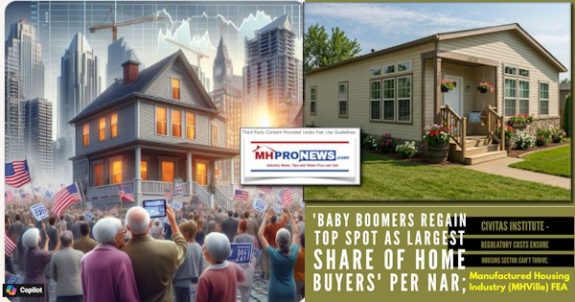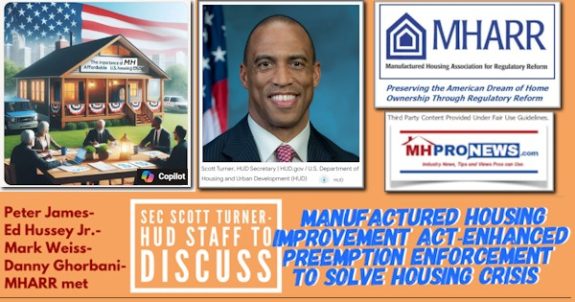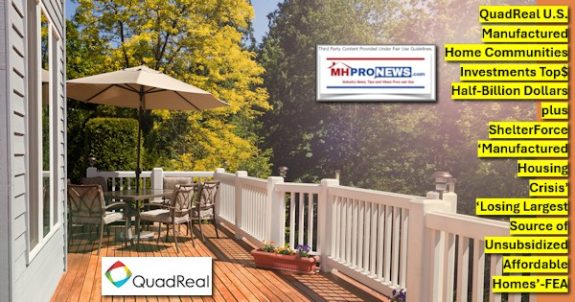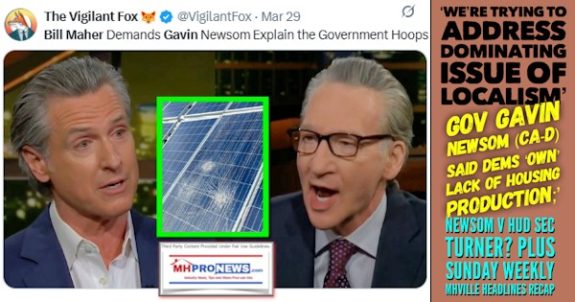National News
Mortgage Rates Lowest in 60 Years
Interest on 30- and 15-year fixed mortgages hit record lows for the second consecutive week, reports Freddie Mac. The average rate for 30-year loans fell to 3.83 percent, down from 3.84 percent a week ago, while the average rate for 15-year mortgages slipped to 3.05 percent from 3.07 percent.
From “Mortgage Rates Lowest in 60 Years”
Philadelphia Inquirer (PA) (05/11/12)
Homebuilder Confidence Grows in Older Housing Markets
Based on the findings of a National Association of Home Builders poll, industry sentiment is growing more favorable when it comes to home buyers and renters aged 55 and up. On a range of 0 to 100, the index rose 10 points in this year’s first quarter to a score of 27 — the highest point since NAHB started tracking the data three years ago. Confidence in the senior housing market now exceeds that for the overall residential property sector, according to the trade group. “Like the overall single-family housing market, the 55+ housing segment is facing a slow but steady recovery,” notes NAHB chief economist David Crowe. “Consumers are starting to see the resale market show some improvement, which allows them to start thinking about moving into 55-plus housing.”
From “Homebuilder Confidence Grows in Older Housing Markets”
Housing Wire (05/10/12) Prior, Jon
Real Estate Outlook: Green Construction Predicted to Grow
Green homes will account for between 29 percent and 38 percent of the market by 2016, up from 17 percent last year, according to the McGraw-Hill Construction SmartMarket Report. “When builders are able to offer homes that not only are green, but also offer the combination of higher quality and better value, they have a major competitive edge over those building traditional homes,” says Harvey Bernstein, McGraw-Hill’s vice president of industry insights and alliances. According to the report, consumers are drawn to green homes because they want to reduce energy costs and believe such homes offer long-term savings and are of higher quality. The report says the higher costs of green construction are no longer an issue, as prices now align with traditional construction due to a healthy supply of green products.
From “Real Estate Outlook: Green Construction Predicted to Grow”
Realty Times (05/07/12) Hill, Carla
National Flood Insurance Program Ends Day Hurricane Season Starts
The National Flood Insurance Program (NFIP) expires on May 31, which is one day before the official start of the hurricane season, and many experts are encouraging homeowners to purchase flood insurance before that date. Congress may not reauthorize the program immediately, and the NFIP has a 30-day waiting period for current homeowners. Homeowners’ insurance for many Florida homeowners can cover hurricane damage resulting from the rain that falls from the sky, but not from rising water as storm surge unless they obtain a flood insurance policy. Once the NFIP is expired, new policies cannot be written and homes without coverage in flood zones could find that money from lenders for those homes will not be released. The American Insurance Association (AIA) and other real estate and insurance groups are working to push Congress for a long-term extension of the NFIP through a “Flood the Hill” campaign. The campaign encourages Americans to contact their representatives by email, phone, or in person to pass S. 1940. While U.S. senators agree that flood insurance should be extended for a long time, the NFIP bills often attract amendments that are controversial.
From “National Flood Insurance Program Ends Day Hurricane Season Starts”
Destin Log (Fla.) (05/04/12)
Industry News
Clayton Homes Offers Energy Cost Guide
Clayton Homes, seeking a way to illustrate the energy savings that its factory-built dwellings offer, has come up with the Home Energy Guide. Each unique label — posted inside of the home — features a multicolored visual scale that compares the property’s energy efficiency to a similarly sized residence built several years ago. It also provides a menu of the home’s energy conservation features — including programmable thermostats and efficient heating and cooling equipment — as well as an estimate of the total monthly cost. “The idea is to make the home-buying decision easier and more transparent,” according to Brandon O’Conner, i-house project manager for Clayton Homes. The builder used a Department of Energy (DOE) program called the Builder’s Challenge as a model for its label, according to O’Conner, and uses DOE’s “Energy Gauge” estimation software to calculate savings and cost information.
From “Clayton Homes Offers Energy Cost Guide”
Knoxville News-Sentinel (05/10/12) Willett, Hugh G.
Sun Communities, Inc. Reports 2012 First Quarter Results
Southfield, Mich.-based Sun Communities Inc., which owns and operates manufactured housing and recreational vehicle communities, reported higher funds from operations and net operating income for the first three months of the year. Additionally, it posted more home sales for the quarter. A total of 401 were sold during the period, up 12.3 percent from 357 units sold one year earlier. The real estate investment trust also had 294 revenue-producing sites in the first quarter, compared to 143 in the same period of 2011.
From “Sun Communities, Inc. Reports 2012 First Quarter Results”
Reuters (04/26/12)
Manufactured Homes With High-End Amenities
Unlike its smaller predecessors, today’s manufactured homes are averaging 1,500 square feet and featuring high-end options like built-in shelving, cathedral-style ceilings, central air-conditioning, crown molding, fireplaces, front porches, granite countertops, Jacuzzi tubs, kitchen islands opening to great rooms, stainless-steel appliances, wall-to-wall carpet, walk-in closets, and wood floors. “So many people have no idea of what these brand-new ones look like,” notes Dolores Peterson of Colony Realty in Jamesport, N.Y. “They’re making them better and better every year.” Although residents in manufactured home communities do not own the land beneath their home, but rather lease it, the monthly maintenance fee can include some utilities as well as the lease; and the homes are affordable. “You can live off Social Security here,” says real estate broker Joy Bryant of Little Bay Realty in Wading River, underscoring manufactured housing as a great option for retirees.
From “Manufactured Homes With High-End Amenities”
Chicago Tribune (IL) (05/10/12) Whitehouse, Beth
Hurt Visits Nelson Homes, Discusses Industry Challenges
Virginia state Rep. Robert Hurt — who sits on the chamber’s financial services committee and is vice-chair of its insurance, housing and community opportunity subcommittee — recently paid a visit to Nelson Homes, where he and owner Robert Rutherford discussed the challenges ahead of the manufactured housing industry. One of the biggest obstacles, according to Rutherford, is lining up financing to launch an independent business in a sector considered to be “in stress.” Additionally, customers — even those with solid credit — are finding it difficult to get the loans they need to purchase a manufactured home. Rutherford suggested that Hurt and other lawmakers could help the industry by approving the Builders Energy Star Tax Credit, which provides incentives for people to incorporate energy-saving components in the home. According to Rutherford — who includes solar panels, geothermal technology, and other energy-conserving features in his units — the tax credit would help close deals and subsequently put cash in business owners’ pockets.
From “Hurt Visits Nelson Homes, Discusses Industry Challenges”
Nelson County Times (VA) (05/09/2012) Koerting, Katrina
RVs and Manufactured Homes Power Patrick Industries’ Sales Surge
Patrick Industries Inc., which makes and supplies building and component products to the manufactured housing and recreational vehicle sectors, enjoyed higher sales during the first quarter. Net volume hit $102.7 million for the three months, up 47.8 percent from the same period of last year. The improvement was driven in part by a 36 percent increase in revenue from the manufactured housing industry, which accounted for 18 percent of first-quarter sales. Revenue from the RV segment ballooned 57 percent and made up 69 percent of all sales for the quarter. Patrick also benefited from sales growth in its industrial segment as well as from acquisitions, including its estimated $4.4 million buyout of Decor Manufacturing LLC.
From “RVs and Manufactured Homes Power Patrick Industries’ Sales Surge”
Woodworking Network (05/02/12) Christianson, Rich
Horizon, Federal Capital Pay $29.5M for Manufactured Housing Communities
Horizon Land Co. LLC and Federal Capital Partners (FCP) have entered into a joint venture, paying $29.5 million for a portfolio of manufactured housing communities located in Maryland, North Carolina, and Pennsylvania. Of the 1,358 homes in the communities, 88 percent are leased. FCP managing partner Thomas A. Carr said that “these properties offer an excellent investment opportunity … typically offering strong and extremely stable cash flow,” and described the entry into the joint venture as a “logical extension” of the company’s focus on investing multifamily properties.
From “Horizon, Federal Capital Pay $29.5M for Manufactured Housing Communities”
Baltimore Business Journal (04/19/12) Briggs, James
New Orangeburg Manufacturer Means Jobs for S.C. and Homes for Haiti
Innovative Composites International (ICI) will be manufacturing affordable housing systems at a 126,00-square-foot facility in Orangeburg, S.C., after being offered incentives worth $17 million to set up in the state. The ICI facility is expected to turn out an estimated 5 million square feet of housing a year after reaching full capacity. The facility currently employs 25 people who produce the components for about five modular homes a week, although it eventually will employ some 320 people, and ICI expects to be hiring for manufacturing, production and office jobs during August or September. The facility will be producing EcoScape modular housing, which uses foam-core structural panels reinforced with a thermoplastic fiber-reinforced skin; the largely recycled material uses no wood, and is impervious to water and impact resistant. The company says that 16 8-by 16-foot shelters of this material can be shipped in a single 40-foot container and assembled with only a screwdriver. ICI signed agreements worth $228 million to supply modular housing to Brazil, Haiti, and Ghana, and chose to come to South Carolina because of the strong port, which would provide efficient shipping.
From “New Orangeburg Manufacturer Means Jobs for S.C. and Homes for Haiti”
Post and Courier (SC) (05/16/2012) Slade, David
CASS Homes Opens in Billings
CASS Homes has set up shop in 70,000 square feet of former warehouse space in Billings, Mont., where it will manufacture single-family homes, multifamily communities, hotels, and offices. Production is slated to start up around mid-May. The upscale and eco-friendly modular buildings will be shipped to end users throughout Montana; in North Dakota and Colorado; and in the Canadian provinces of Alberta, Manitoba, and Saskatchewan. Once they arrive at their destinations, they will be placed onto a permanent foundation. CASS Homes’ partners say they have already doubled their projected orders for 2012, and they hope to build a staff of 100 by the end of the year.
From “CASS Homes Opens in Billings”
KULR-8 TV (05/09/12) Ussin, Katie
MHI News
4,696 New HUD Code Homes Shipped in March 2012
In the month of March 2012, 4,696 new manufactured homes were shipped, up 16.4 percent from March 2011. Increases were across the board with shipments of both single-section and multi-section homes up compared with the same month last year. As with the first two months of 2012, single section homes accounted for the largest portion of the increase, with shipments up 23.5 percent compared with the March 2011 figures.
Compared with the prior year, 2012 recorded shipment increases in January, February, and March. For the first three months of this year, shipments totaled 12,780 homes compared with 9,696 homes in 2011, a net increase of 31.8 percent.
The seasonally adjusted annual rate (SAAR) of shipments was 57,268 in March 2012, down 9.3 percent from February 2012 which had 63,111shipments. The SAAR corrects for normal seasonal variations in shipments and projects annual shipments based on the current monthly total.
Total floors shipped in March 2012 were 7,132, an increase of 14.4 percent over March 2011. A total of 122 plants reported production in March and the number of manufacturing companies stands at 46, both unchanged from last month.
Banking Industry Split Over Qualified Mortgage Rules
In May 2011, the Federal Reserve Board issued proposed rules implementing provisions of the Dodd-Frank Act requiring lenders to verify a consumer’s ability to repay a mortgage. Under the law, a loan that meets the definition of a “qualified mortgage” (QM) is presumed to have met Dodd-Frank’s ability to repay requirements. The CFPB is expected to issue a final rule during the coming months.
Last year’s proposed rules developed two alternatives for those originating a QM: 1) a safe harbor that the lender has complied with ability to repay requirements; or 2) a rebuttable presumption of compliance. Loans that meet the QM standards are also exempt from being classified as “higher-risk” and thereby not subject to appraisal requirements outlined in the Dodd-Frank Act (section 1471).
Both the American Bankers Association and the Mortgage Bankers Association sent comment letters in favor of the creation of a safe harbor. A position that was reiterated when the two organizations were joined by more than 20 other national housing associations in a letter to CFPB Director Richard Cordray asserting that the adoption of a rebuttable presumption, over a safe harbor, “can be expected to result in the exit of lenders—large and small—from the market and a reduction in credit from those remaining. In a formal comment letter, MHI supported the adoption of a safe harbor for lenders originating QMs.
The Clearing House Association, which represents nearly 20 of the world’s largest banks including Bank of America and Wells Fargo, initially filed comments in favor of the safe harbor alternative. However, the group reversed course in March and joined with consumer groups Center for Responsible Lending and Consumer Federation of America in making joint recommendations for a broad QM standard as well as a rebuttable presumption approach. Click here to view the joint recommendation.
One facet of the joint proposal would allow QMs to have points and fees that do not exceed the greater of $3,000 or three percent of the total loan amount—so long as it is not a Home Ownership and Equity Protection Act (HOEPA) loan. MHI has advocated for the greater of three percent or $2,000 and has urged the CFPB to provide variance in applying HOEPA triggers to manufactured home loans.
While it is unclear when the QM rules will be released by the CFPB, under the Dodd-Frank Act the rules must be issued in final form by January 21, 2013 (with implementation by January 2014) or the statute itself goes into effect.
CFPB Gives Sneak Peek of Coming Loan Originator Compensation Rules
On May 9th, the Consumer Financial Protection Bureau (CFPB) unveiled initial details of rules to be formally released later this summer regarding loan originator compensation. The CFPB outline of the proposed rule provides indications of the limits that will be proposed on origination fees. Click here for the outline.
Most significantly, brokers and creditors would no longer be able to charge origination fees that vary with loan size. Under the proposed rules, brokers and creditors would only be allowed to charge flat origination fees.
In addition, while the rule does not impose new requirements on individuals that must be SAFE Act compliant, the rule does — under Dodd-Frank guidelines — impose new requirements that would:
• Not alter the scope of individuals who are subject to licensing or registration, and it would not alter the minimum standards for licensing or registration. It would instead define what is necessary for entities that employ or retain the services of such individuals in order to comply with the new Dodd-Frank requirement that they also be “qualified.”
• Require that to be “qualified,” mortgage loan originators (MLO) entities must ensure that MLO individuals who work for them are licensed or registered, to the extent those individuals are already required to be licensed or registered under the SAFE Act and its implementing regulations. The proposal being considered would clarify that MLO entities are obligated under TILA to ensure that their MLO employees comply with SAFE Act requirements.
The CFPB is seeking input, particularly from small business entities on a variety of questions related to the coming proposed rules. Click here for more information. For an analysis of the outline, click here.
Fiscal Year 2013 Energy and Water Appropriations Bill Approved by Appropriations Committee
The House Appropriations Committee has approved the Fiscal Year 2013 Energy and Water Appropriations bill. The legislation provides the annual funding for the various agencies and programs under the Department of Energy (DOE) and totals $32.1 billion – a cut of $965 million below the President’s budget request.
With the support of Congressman Alan Nunnelee (MS-1st- R), a key member of the Appropriations Committee, MHI staff was able to include legislative language in the bill to better direct the Department of Energy’s efforts in developing the new energy standards for manufactured homes. Special thanks go to Jennifer Hall, Executive Director of the Mississippi Manufactured Housing Association, for her outstanding advocacy efforts on behalf of our industry. MHI will continue to work with congressional staff to seek relief from burdensome energy regulations imposed by the Energy and Security Independence Act (EISA) of 2007.
MHI believes that the new standards need to strike a balance: minimize energy use and costs for the next generation of manufactured homes while preserving affordability. Given the economic climate, the effect of the new energy efficiency standards should be evaluated for overall additional costs to already burdened consumers and to small businesses who are struggling to survive the highly uncertain economic environment.
MHI Participates in Urban Land Institute’s Spring Meeting
MHI participated in the Urban Land Institute’s Spring 2012 Meeting by taking part in the Manufactured Housing Community Council (MHCC) meeting on Wednesday, May 9th. The MHCC is composed of manufactured home community owners, manufacturers of our homes, real estate analysts, manufactured housing suppliers and other interested parties to discuss the challenges and opportunities inherent in manufactured home communities.
The prevailing mood at the MHCC was one of optimism that the housing crisis is now moving into recovery, with positive indicators pointing to a continuing recovery in housing markets. Champion Home Builders’ Kevin Flaherty, Vice President of Marketing, gave an in-depth and informative presentation on the operational costs of building a manufactured home today, along with a look at design innovations and trends and how evolving customer preferences are driving changes in today’s manufactured homes. Chris Parrish of Parrish Manor, a 280-site manufactured home community in Garner, North Carolina, discussed his innovative approach to community management and how he is leveraging his partnerships with various organizations to build a competitive advantage in his housing market.


























